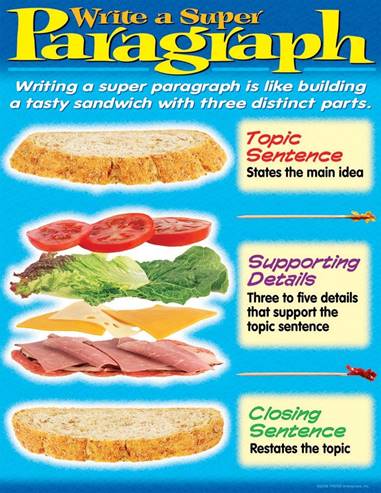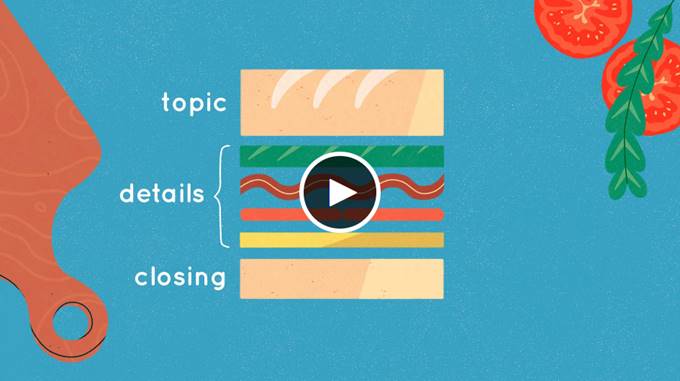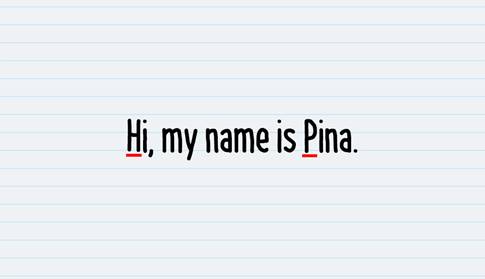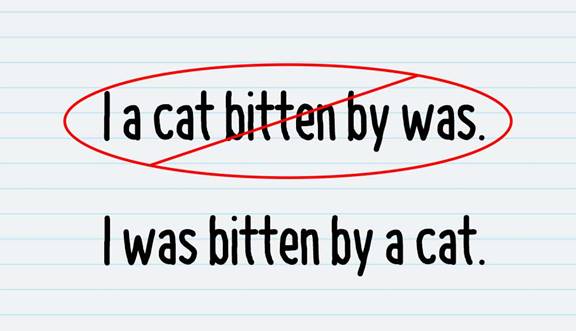Paragraphs
Unit Overview
By the end of the unit, you will be able to
identify the components of a paragraph, including the topic sentence and
concluding sentence. You will also learn about indentation, sentence unity, and
the role of the simple present tense in expressing general facts. Moreover, you
will practice combining sentences to create longer, smoother paragraphs and gain
insight into using capitalization, end punctuation, and proper subject-verb
agreement. Through interactive learning activities, you will enhance your
writing skills and be better equipped to craft coherent and compelling
paragraphs in your academic work.
What is a Paragraph?
A paragraph
consists of a collection of sentences that are organized together. It
encompasses a central idea supported by additional sentences that provide
relevant details. Paragraphs are a valuable tool for writers to structure their
thoughts while composing extensive texts, such as essays and research papers.
Acquiring the ability to craft well-structured paragraphs is a significant
academic proficiency.

Four
Features of a Good Paragraph
1. The first line should
be indented
when starting a new paragraph. This means moving it slightly to the right by
about half an inch (1.25 centimeters) or approximately six spaces on a
keyboard.
2. Every paragraph begins
with a topic sentence, which expresses the paragraphís main idea. The
topic sentence is typically positioned at the beginning to help readers grasp
the paragraph's subject.
3. A paragraph focuses
solely on one topic, and all its sentences are connected to the topic
sentence. There should be no unrelated or extra sentences that do not relate to
the main idea.
4. Concluding a paragraph involves a concluding
sentence with a logical ending. It may restate the main point or summarize the
main idea. Additionally, it can offer suggestions, opinions, or predictions.
However, it should never introduce new information. Often, the concluding
sentence incorporates a keyword or phrase from the topic sentence.
Letís Practice
Click on the image below to complete a learning
activity on paragraphs.
Username
masloski7511
Password
lemon6753
Key Note: Contrasting Ideas
When showing that a new idea is in contrast, or
different, from the ones before, use various kinds of contrast connectors (but, while, in contrast, however, on the
other hand).
∑
These countries may be near each other but differ in several
ways.
∑
Brazil has almost 200 million people, while only 17 million live in Chile.
Understanding Grammar: The Simple Present Tense
|
Description |
Examples |
|
|
Use the simple present to explain something
that is a general fact. |
People in
Chile speak Spanish. These two
countries differ in population. |
|
|
Use the
base form of the verb for I, you, we, and they |
I, You,
We, They, Brazilians |
speak |
|
Use the
-s form for he, she, and it and third-person nouns. |
A Brazilian,
He, She, It, ††††††††††††† |
speaks |
|
When a
verb ends in a consonant + y,
change the -y to -i and add -es. |
I try ŗ He tries |
|
|
When a
verb ends in -ch, -sh, -ss, -x,
or -zz,
add -es. |
pilots
watch - a pilot watches janitors
wash - a janitor washes people
miss - a foreign student misses |
|
Letís Practice
Key Note: Sequence Words
When writing instructions or steps in a
process, use sequence words, such as First,
Second, Next, and Finally. Often a comma comes after the sequence word.
∑
First, boil two eggs for five minutes. Next, add three tablespoons of mayonnaise and a little salt and
pepper. Finally, put the egg salad
between two slices of bread.
Mechanics: Capitalization and End Punctuation
Capital
letters
serve two purposes in writing.
1.
They indicate the beginning of a sentence.
2.
They are used to denote proper nouns, such as names.
Proper nouns are specific names given to
individuals (e.g., Dr. Patterson), places (e.g., Germany), companies (e.g.,
Southwest Airlines), and various other entities (e.g., Hello Kitty, the Warsaw
Pact, ...).
Letís Practice
Click on the image below to complete a learning
activity on Capitalization.
End
punctuation marks are essential to convey different sentence types and
emotions. They include three main types: periods
(.), question marks (?), and exclamation marks (!).
1. Periods (.) indicate the end of a declarative sentence or a
statement.
∑ Example: "I went
to the store."
2. Question marks (?) are used at the end of interrogative
sentences, which ask questions.
∑ Example: "Did you
finish your homework?"
3. Exclamation marks (!)express strong emotions, surprise, or
excitement.
∑ They come at the end of
exclamatory sentences. Example: "What a beautiful sunset!"
Letís Practice
Click on the image to complete a learning
activity on End Punctuation.
Key Note: Topic Sentences
Remember that the topic sentence presents the
main idea for the entire paragraph. Always keep this main idea in mind when
writing a paragraph.
Grammar: Subject-Verb Agreement in the Simple Present
|
Description |
Example |
|
Make sure
the verb form matches the subject in number. If the subject is singular, the
verb should be singular. If the subject is plural, the verb should be plural.
Remember
to use the -s form of the verb with
he, she, and it. |
Singular: A good
student learns new words every
day. Plural: Good students
learn new words every day. |
|
Prepositional
phrases include a preposition (at, for,
by, with, without, in, of, and so
on.) + an object of the preposition (a noun, noun phrase, pronoun). The
object of a preposition is never the subject |
The main products of Brazil and Colombia are coffee and aluminum. The main product of Brazil and Colombia is coffee. |
|
The noun
after there is or there are is the sentenceís subject. |
There is a dictionary on the table. There are three reasons for this decision. |
|
Pronouns
with every-, some-, or any- are always singular. Nouns with
each or every are also singular. |
Everyone has an accent of some
kind. Every student needs
a book and a workbook. |
|
Gerunds
(-ing words used as a noun) are always
singular. |
Drinking milk is good for your body. Drinking milk and juice is good for your body. |
Letís Practice
Click on the image to complete a learning
activity on Subject-Verb Agreement.
Combining Sentences
Certain writers prefer using shorter sentences because they fear
making errors when attempting longer, more complex sentences. However, longer sentences facilitate the
connection of ideas, leading to better comprehension for the reader. Essential details
from each sentence can be incorporated to create longer, more fluid sentences.
While some words or word forms may change or be omitted during this process, no
ideas are altered or left out. It's important to remember that there are
usually multiple ways to combine sentences effectively.
∑ There was a storm
yesterday.
∑
It was strong.
∑ It moved quickly
to the city.
Now read these longer, smoother sentences:
∑ Yesterday, a strong
storm moved quickly toward the city.
∑ There was a strong
storm that moved quickly toward the city yesterday.
Letís Practice
Building Better Vocabulary
Vocabulary Words
Click on the vocabulary words to see their definitions:



